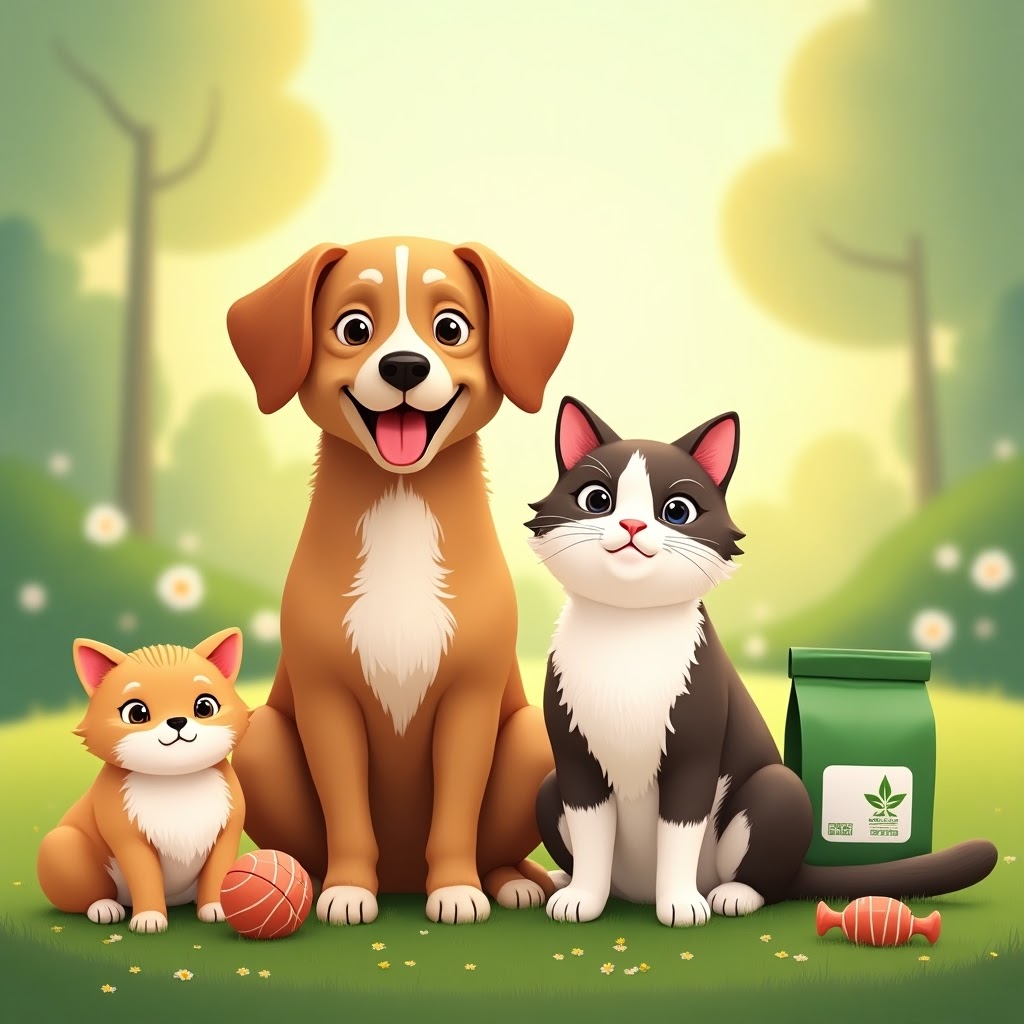
Products Impact the Environment
In recent years, the pet industry has experienced tremendous growth, with millions of people worldwide owning pets and investing in their care. From nutritious food and stylish accessories to toys and grooming products, the market for pet products continues to expand. While these products enhance the lives of pets and their owners, it is important to consider their environmental impact. This blog post explores how pet products affect the environment and what steps pet owners and manufacturers can take to reduce the ecological footprint of pet care. Eco-friendly
The Scale of the Pet Industry
The pet industry is a multi-billion dollar market globally. In the United States alone, pet ownership exceeds 67% of households, with annual spending on pet products reaching tens of billions of dollars. This includes pet food, toys, grooming supplies, bedding, and waste management products. The sheer scale of consumption means that the environmental consequences of producing, transporting, and disposing of these products are significant.
Environmental Impacts of Pet Food
Pet food is the largest category of pet products by volume and expenditure. Most commercial pet foods are made from animal-derived ingredients such as meat, poultry, and fish, which have considerable environmental footprints.
- Resource Consumption
Producing animal-based pet food requires vast amounts of land, water, and energy. Livestock farming contributes to deforestation, soil degradation, and water shortages. For example, beef production for pet food demands more resources compared to plant-based alternatives. Additionally, feed crops for livestock compete with human food crops, raising concerns about food security.
- Greenhouse Gas Emissions
Livestock farming is a major source of greenhouse gases, including methane and nitrous oxide, which contribute to climate change. The production of meat-based pet food adds to these emissions, intensifying the environmental impact.
- Overfishing and Marine Ecosystems
Many pet foods contain fish or fish oil, which can contribute to overfishing and threaten marine biodiversity. Unsustainable fishing practices disrupt aquatic ecosystems and reduce fish populations, affecting the balance of marine life.
- Packaging Waste
Pet food is often packaged in plastic bags, cans, and pouches. These materials contribute to plastic pollution, especially if not recycled properly. Packaging waste adds to landfill volumes and may release harmful chemicals into the environment over time.
Impact of Pet Toys and Accessories
Pet toys, collars, leashes, and bedding are commonly made from synthetic materials such as plastics, nylon, and polyester. These materials are derived from fossil fuels and are not biodegradable.
- Plastic Pollution
When pet toys and accessories wear out or are discarded, they often end up in landfills or as litter. Over time, plastic products can break down into microplastics, which contaminate soil, waterways, and oceans. Microplastics are ingested by wildlife and enter the food chain, posing health risks to animals and humans alike.
- Manufacturing Footprint
The production of synthetic pet products involves energy-intensive processes and releases pollutants. The extraction and processing of raw materials contribute to environmental degradation and carbon emissions.
- Durability and Waste
Many pet toys are designed for short-term use and quickly become damaged. This results in frequent replacement and increased waste generation. Durable and repairable pet products can reduce this impact.
Grooming Products and Environmental Concerns
Pet shampoos, conditioners, flea treatments, and other grooming products often contain chemicals that can be harmful to the environment.
- Chemical Pollution
Ingredients such as parabens, phthalates, and synthetic fragrances can contaminate water sources when washed down drains. These substances may disrupt aquatic ecosystems and harm wildlife.
- Packaging Waste
Like pet food, grooming products are typically packaged in plastic bottles and tubes. Improper disposal contributes to plastic pollution.
- Alternatives
Eco-friendly grooming products made from natural, biodegradable ingredients and minimal packaging are becoming more available, offering less harmful options for pet care.
Pet Waste Management and Environmental Impact
Managing pet waste, especially dog feces, is a significant environmental challenge.
- Plastic Waste from Bags
Most pet owners use plastic bags to pick up waste, which adds to plastic pollution. Many of these bags are single-use and not biodegradable.
- Waste Disposal Issues
Improper disposal of pet waste can contaminate soil and waterways, spreading pathogens and contributing to nutrient pollution that leads to algal blooms.
- Sustainable Solutions
Biodegradable waste bags and pet waste composting systems can mitigate environmental harm. Some communities have implemented pet waste recycling programs to convert waste into usable products.
Steps Toward More Sustainable Pet Care
Recognizing the environmental impact of pet products is the first step toward change. Here are several ways pet owners, manufacturers, and policymakers can promote sustainability in the pet industry:
- Choose Eco-Friendly Pet Food
Opt for pet foods with sustainably sourced ingredients, including plant-based options and those certified by environmental organizations. Some brands use insect protein or lab-grown meat to reduce resource use.
- Reduce Packaging Waste
Select products with minimal, recyclable, or biodegradable packaging. Support companies that prioritize sustainable packaging solutions.
- Buy Durable and Recyclable Toys
Invest in high-quality, long-lasting pet toys made from natural or recycled materials. Avoid cheap plastic toys that break easily.
- Use Natural Grooming Products
Switch to grooming products made from organic, biodegradable ingredients without harmful chemicals.
- Adopt Sustainable Waste Practices
Use compostable pet waste bags and dispose of waste responsibly. Participate in local pet waste recycling initiatives if available.
- Support Responsible Brands
Encourage manufacturers to adopt sustainable practices through your purchasing choices. Support companies committed to environmental stewardship and transparency.
- Educate and Advocate
Raise awareness about the environmental impact of pet products among fellow pet owners. Advocate for policies that promote sustainability in the pet industry.
Conclusion
Pet products play a vital role in the care and happiness of our animal companions, but their environmental footprint is significant and often overlooked. From the resource-intensive production of pet food to the plastic pollution caused by toys and packaging, each aspect of pet care contributes to ecological challenges. By making informed choices and supporting sustainable practices, pet owners can help reduce the environmental impact of their pets. Similarly, manufacturers have a responsibility to innovate and prioritize eco-friendly products to protect the planet for future generations of pets and people alike. Together, mindful consumption and responsible production can ensure that caring for our pets does not come at the expense of the environment.
